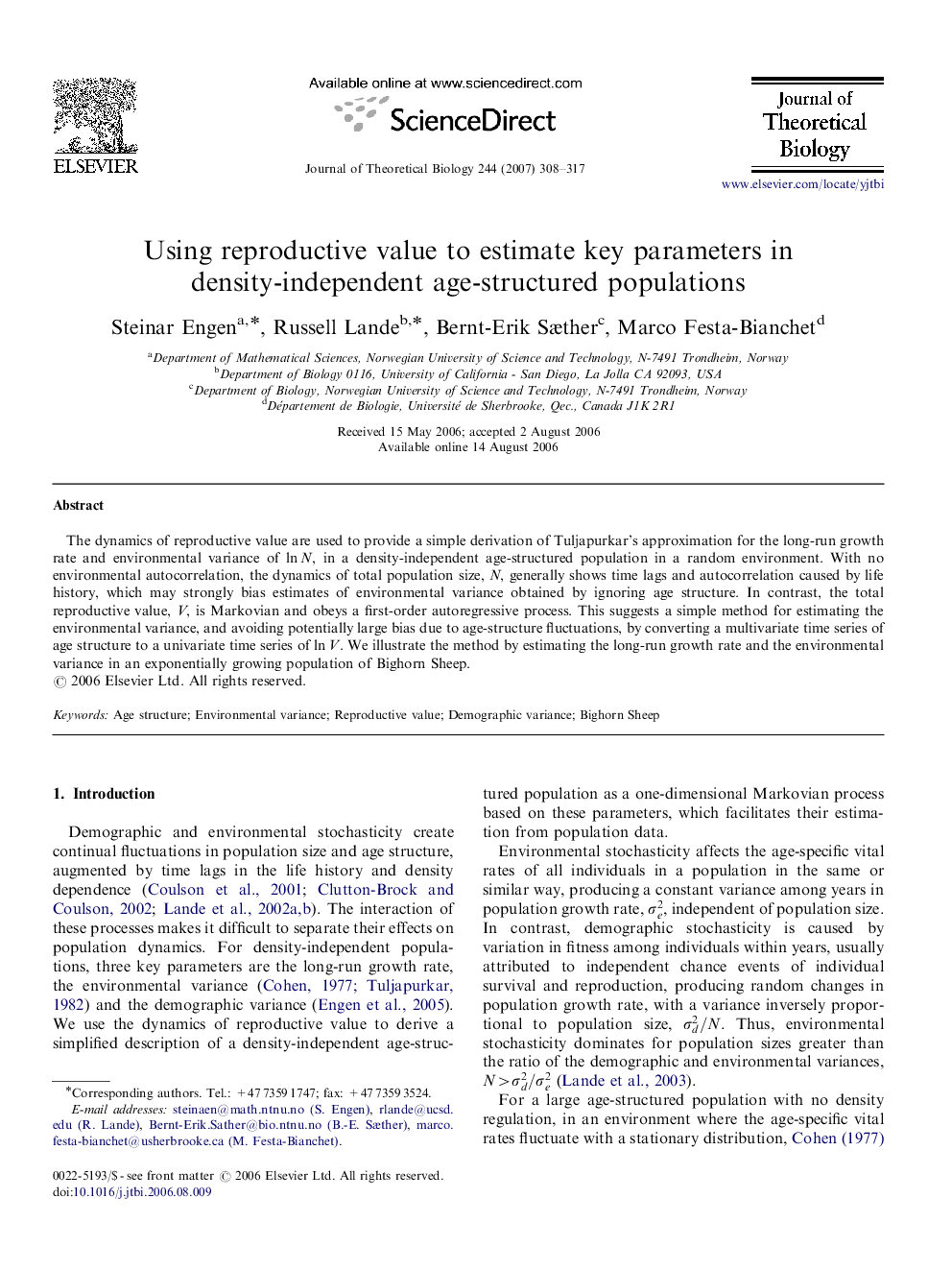| Article ID | Journal | Published Year | Pages | File Type |
|---|---|---|---|---|
| 4498962 | Journal of Theoretical Biology | 2007 | 10 Pages |
The dynamics of reproductive value are used to provide a simple derivation of Tuljapurkar's approximation for the long-run growth rate and environmental variance of lnNlnN, in a density-independent age-structured population in a random environment. With no environmental autocorrelation, the dynamics of total population size, N, generally shows time lags and autocorrelation caused by life history, which may strongly bias estimates of environmental variance obtained by ignoring age structure. In contrast, the total reproductive value, V , is Markovian and obeys a first-order autoregressive process. This suggests a simple method for estimating the environmental variance, and avoiding potentially large bias due to age-structure fluctuations, by converting a multivariate time series of age structure to a univariate time series of lnVlnV. We illustrate the method by estimating the long-run growth rate and the environmental variance in an exponentially growing population of Bighorn Sheep.
